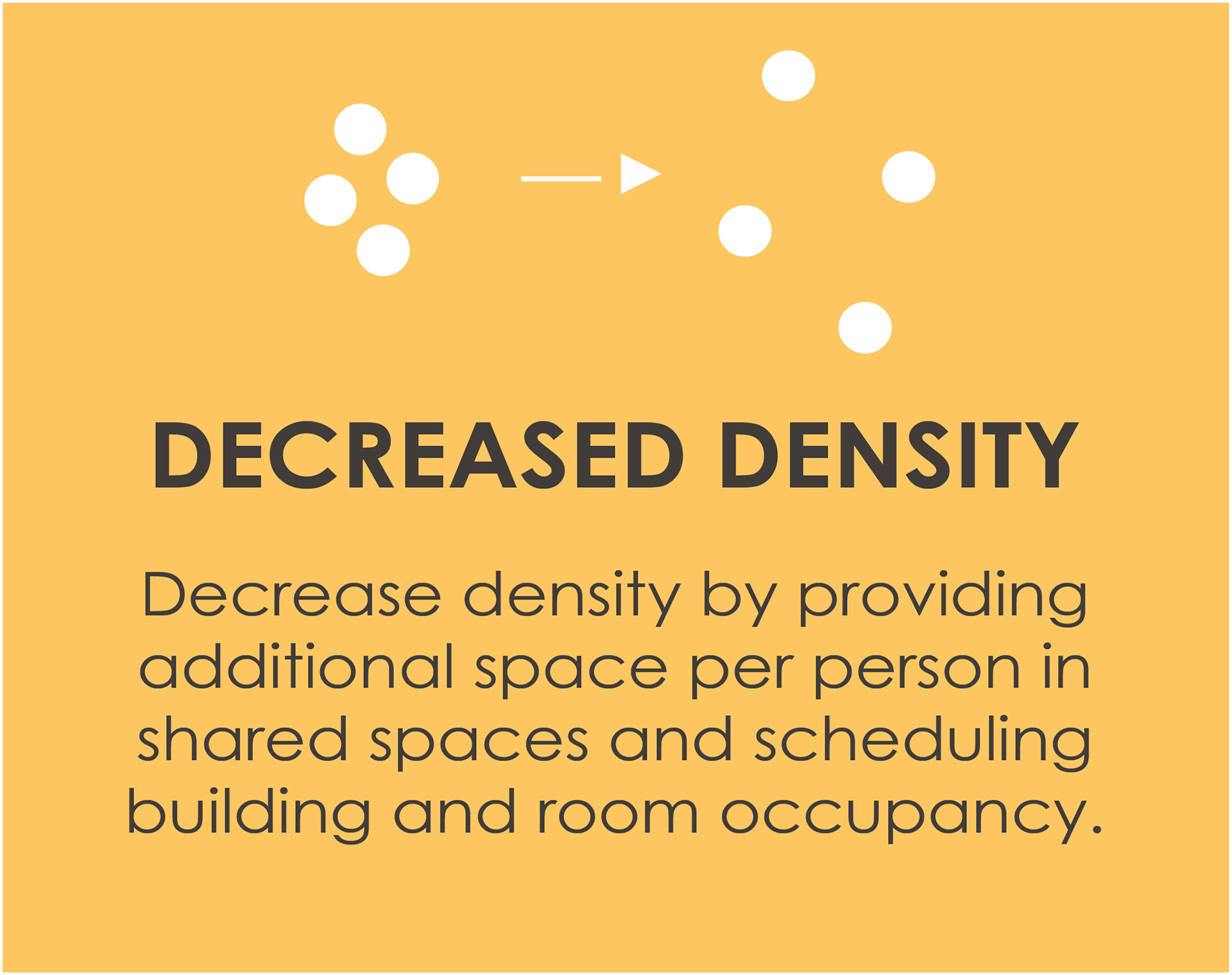
Decrease density by providing additional space per person in shared spaces and scheduling building and room occupancy.
- Consider staggering employee schedules between working in the building and working from home to decrease building occupancy.
- Consider scheduling staggered use of high-occupancy spaces, such as break rooms and conference rooms, to eliminate larger gatherings during peak demand times.
- Encourage proper social distancing in high-occupancy spaces by removing furniture or providing signage and visual cues.
- Reduce crowding in lobbies/waiting rooms by asking patients/patrons to remain in vehicles or outdoor waiting areas until they are called into the facility for their appointment.
- Provide pickup windows or other accommodations for curb-side services, where appropriate.
- Use outdoor space for socially-distant gatherings that are unable to be accommodated in indoor space, such as meetings, meals, breaks, etc.

